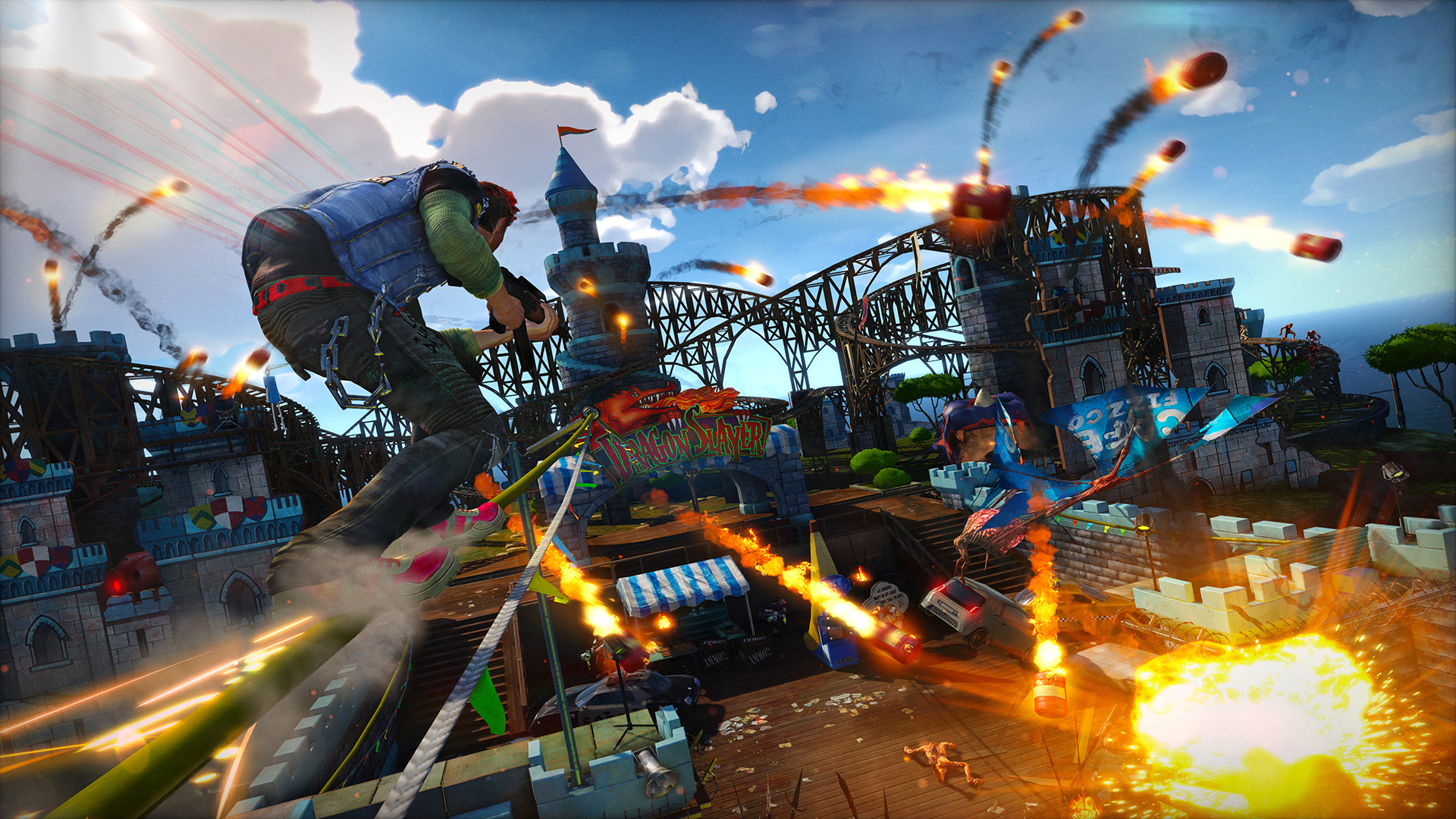Sonic 3D Blast for Mega Drive/Genesis is an iconic game that has remained a classic among video game enthusiasts. Released in 1996, it was a huge success, and the game continues to have a special place in the history of gaming. Sonic 3D Blast was one of the first games to incorporate a partially three-dimensional perspective, which made it a game-changer in the video game world. The release of Sonic 3D Blast was a significant moment in gaming, and it still is held in high regard today. In this article, we will take a closer look at what made Sonic 3D Blast so important, and explore the game’s most memorable features. We’ll delve into gameplay mechanics, storyline, characters, and overall presentation of the game. With all that in mind, let’s explore Sonic 3D Blast and find out why it continues to be a beloved piece of video game history.
Gameplay and Controls
Sonic 3D Blast for Mega Drive/Genesis is an action-packed game that combines fast-paced gameplay with stunning visuals. The game focuses on puzzle-solving, platforming, and exploration, with the player taking on the role of Sonic the Hedgehog, the iconic blue hedgehog that has been entertaining audiences for over two decades.
The gameplay mechanics are straightforward, with players moving Sonic through a series of levels, collecting orbs, and freeing animals trapped in robotic shells. The game uses an isometric view, which gives the player a more 3D perspective of Sonic’s world. The isometric gameplay adds a unique dimension to the game, making it more challenging and rewarding.
The controls are relatively easy to master, with Sonic moving primarily with the directional pad and using just a few buttons for jumping and spinning. The controls are responsive, which allows for precise movements in an otherwise fast-paced game. Players must be careful, as Sonic can easily fall into pits or get caught by enemy traps if they are not careful.
The learning curve in Sonic 3D Blast for Mega Drive/Genesis is moderate, with the first few levels serving as an introduction to the game mechanics. As the player progresses, the difficulty level increases, requiring more skill and precision to advance. The game’s boss battles are particularly challenging, adding an additional layer of excitement to the overall gaming experience.
Overall, the gameplay and controls of Sonic 3D Blast for Mega Drive/Genesis are smooth, responsive, and immersive. The game introduces new elements to the classic Sonic formula, creating a memorable and entertaining experience for players of all ages.
Sonic 3D Blast for Mega Drive/Genesis: Storyline and Characters
When it comes to Sonic 3D Blast for Mega Drive/Genesis, the storyline is rather simple. Dr. Eggman has created a machine that turns innocent animals into evil robots known as “Flickies.” Sonic must travel through various levels to find the Flickies and free them from Eggman’s control. Along the way, he faces obstacles and enemies trying to stop him from completing his mission.
The game’s main characters are Sonic and Dr. Eggman, along with the Flickies. Sonic is the familiar blue hedgehog that players have come to know and love. Dr. Eggman, also known as Dr. Robotnik, is Sonic’s enemy and the creator of the Flicky machine. The Flickies are small, bird-like creatures that Sonic must rescue.
The storyline and characters of Sonic 3D Blast for Mega Drive/Genesis add to the overall gaming experience in several ways. The simple storyline allows players to focus on the gameplay mechanics and explore the various levels. The characters are familiar to long-time Sonic fans, adding a sense of nostalgia and familiarity to the game. Additionally, the Flickies add an extra level of challenge to the game, as Sonic must rescue them while also fighting off enemies.
Overall, the storyline and characters of Sonic 3D Blast for Mega Drive/Genesis are a key part of the game’s appeal. They add depth to the game’s mechanics and provide a sense of familiarity for long-time Sonic fans. The game’s simplicity and focus on gameplay make it a great choice for both casual and serious gamers alike.
Graphics and Sound
Sonic 3D Blast for Mega Drive/Genesis was released in 1996 and, at the time, it was a visually stunning game. The graphics were bold and colorful, with a distinctly cartoonish style. Every level was unique, and the game designers put a lot of effort into making each one look different. The models for Sonic and the game’s enemies were detailed, and animations were smooth and fluid. Players could appreciate the time and effort that went into creating the game’s graphics.
The graphics in Sonic 3D Blast for Mega Drive/Genesis were accompanied by an equally impressive sound design. The sound effects were spot on, with each jump, spin, and attack having its own unique sound. The musical score was lively and fun, perfectly capturing the spirit of the game. The soundtrack was composed by Jun Senoue, who was responsible for the music in several popular Sonic the Hedgehog titles.
Together, the graphics and sound in Sonic 3D Blast for Mega Drive/Genesis contribute to an immersive gaming experience. It’s easy to get lost in the vibrant game world, and the music keeps you engaged throughout. The visual presentation is especially noteworthy, as it set a high bar for other games in the genre to follow. While the game may not be as visually impressive by today’s standards, it still highlights the importance of creating a strong and cohesive graphical style.
Reception and Criticism
Sonic 3D Blast for Mega Drive/Genesis was released in 1996 to mixed reviews. Some players were impressed by the game’s unique blend of 2D and 3D elements, while others found it to be a frustrating departure from previous Sonic titles.
Critics focused mostly on the slow pace of gameplay and the lack of exploration opportunities. Some found the graphics to be lacking, citing the game’s uninspired level design. Others criticized the controls, saying that the isometric viewpoint made platforming challenging.
Despite these criticisms, the game still has its loyal fans. Many appreciated the more laid-back approach to Sonic gameplay, with exploration and puzzle-solving elements. Some liked the colorful graphics and catchy music, and the transition from 2D side-scroller to 3D was seen as a bold move for the franchise.
It’s worth noting that some criticisms of Sonic 3D Blast may be unfounded. The game was created during a tumultuous time for the Sonic franchise, and Sega was undergoing significant changes in its corporate structure. Some critics suggest that this might have affected the game’s development, leading to a rushed release and technical limitations.
Regardless of its flaws, Sonic 3D Blast remains a noteworthy entry in the Sonic franchise’s history. Its unique blend of gameplay styles, colorful graphics, and catchy music have earned it a place in the hearts of many Sonic fans over the years.
Conclusion
After exploring the various aspects of Sonic 3D Blast for Mega Drive/Genesis, it’s clear that the game offered a unique and enjoyable experience for fans of Sonic the Hedgehog. The gameplay mechanics and controls were enjoyable, providing a fair level of difficulty to keep players engaging.
The storyline and characters added depth to the game, making it a complete gaming experience. Additionally, the graphics and sound were impressive for their time, contributing greatly to the immersive experience.
Although Sonic 3D Blast for Mega Drive/Genesis received criticism, it’s essential to remember that the game was released nearly three decades ago and is impressive when considered as such. While it may not be perfect, it’s still a worthwhile playthrough for any fan of the Sonic series.
Overall, Sonic 3D Blast for Mega Drive/Genesis is a classic game that deserves recognition for providing its unique spin on Sonic the Hedgehog. We recommend giving the game a try, especially for those who appreciate retro gaming and the Sonic franchise.
FAQs
-
What is the gameplay like in Sonic 3D Blast?
The gameplay in Sonic 3D Blast combines the classic side-scrolling elements of the Sonic franchise with a 3D isometric view. Players control Sonic as he navigates through various levels, collecting rings and freeing Flickies from robotic enemies. The game also features boss battles and special stages where players can collect Chaos Emeralds.
-
How difficult is Sonic 3D Blast?
The difficulty level of Sonic 3D Blast is considered moderate, with a learning curve that gradually increases as players progress through the game. Some levels can be more challenging than others, but players can collect power-ups and shields to help them along the way.
-
Who are the main characters in Sonic 3D Blast?
The main characters in Sonic 3D Blast are Sonic the Hedgehog and Dr. Eggman (also known as Dr. Robotnik). The game also features the Flickies, small bird-like creatures that are being held captive by Eggman’s robots.
-
How does the graphics and sound contribute to the overall gaming experience?
The graphics in Sonic 3D Blast were considered cutting-edge for their time, with detailed environments and character models. The game’s musical score also features catchy tunes that add to the fast-paced action of the gameplay, making the overall gaming experience more immersive and enjoyable.
-
What were some criticisms of Sonic 3D Blast?
Some criticisms of Sonic 3D Blast included the game’s camera angles and difficult-to-navigate levels. Some players also felt that the game’s combination of 2D and 3D elements made it feel disjointed and detracted from the overall experience. However, many fans of the Sonic franchise still consider Sonic 3D Blast to be a fun and worthwhile addition to the series.



